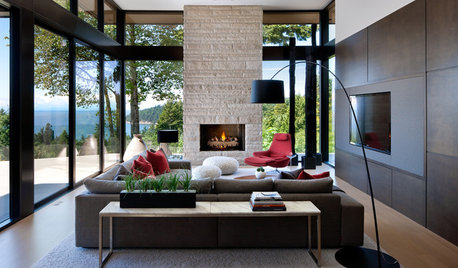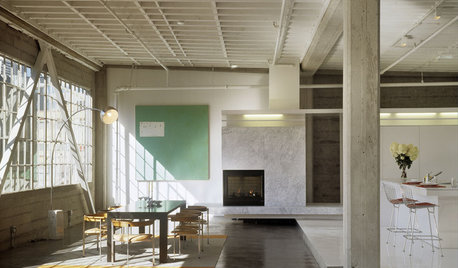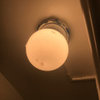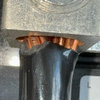sub panel question
16 years ago
Featured Answer
Sort by:Oldest
Comments (26)
- 16 years ago
- 16 years ago
Related Discussions
Basement Sub-panel
Comments (6)You do not add up the individual breakers to come up with the main breaker. 60 should be plenty. I have a 100a service on a 20 slot main box that feeds 350a to 400a if you add up all the individual breakers. In daily life you never use all that power at once....See MoreYet another sub-panel question
Comments (11)Saw this post elsewhere: "At the shed panel you need to have the neutral bar and all neutral wiring together isolated from the grounds. The ground needs to all be on one bar and attached to the panels metal enclosure. Only back at the first means of disconnect ( where the main breaker for the house is located) do the ground conductor and neutral conductor tie electricaly and physically together. You don't have to have a ground rod at the shed. But it dosen't hurt. It should only be tied to the ground bar not the neutral bar. Should a lighting strick hit the ground or shed it will look for the shortest path. And a extra ground rod will help in that situtation. If your neutrals and grounds are made up correctly then they are electrically tie together thats what keeps them at the same potential. It's when telephone and cable tv companies drive their own rod and do not tie or use the service ground is when you have problems. But you did the correct thing you ran a 4 wire feed to your shed. And by doing that grounds and neutrals are kept seperate."...See MoreWiring a sub-panel for Aux. generator
Comments (6)I was looking at wiring diagrams for prewired transfer switches and they do exactly what I want to do. Take the hot wire off the breaker and connect it to the transfer switch which contains a breaker but they leave the neutrals and grounds where they were. So are they also wrong? I am not aware of the derating current when using a conduit but I suppose it has to do with "back emf" or eddy currents. I will have less than 15 feet of conduit and thought it easier & neater than running 12 NM cables. However I can just run 12 black(hot), 12 white(neutral) & 12 green (ground) in my 1 1/4 conduit. Or are you suggesting 3 separate conduits for each type of run?...See MoreSub Panel Question
Comments (4)Given the loads you describe, you should be well within the capacity of a 50-amp sub-panel and still have room (and ampacity) for another circuit or two. This assumes that the electrician wired the panel with a 120/240V feed, which would be the usual practice. (It's a two-pole or "double" 50-amp breaker in your main panel, right? Also, the use of the 12/3 doesn't make any sense unless the panel has a two-pole feed.) That being the case, keep in mind that each of the two legs provides 50 amps of current at 120V. If you have no 240V loads, you can think of that as like having two 50-amp feeds, or 100 amps of available power for 120V circuits. IMHO, you'd be better off running a new circuit for additional receptacles than tapping the warmer drawer circuit because, technically speaking, there's a potential code violation lurking when you don't follow the manufacturer's specifications for a dedicated circuit....See More- 16 years ago
- 16 years ago
- 16 years ago
- 16 years ago
- 16 years ago
- 16 years ago
- 16 years ago
- 16 years ago
- 16 years ago
- 15 years ago
- 15 years ago
- 15 years ago
- 15 years ago
- 15 years ago
- 11 years ago
- 11 years ago
- 11 years ago
- 11 years ago
- 11 years ago
- 11 years ago
- 3 years ago
- 3 years ago
- 3 years ago
Related Stories

KITCHEN DESIGN9 Questions to Ask When Planning a Kitchen Pantry
Avoid blunders and get the storage space and layout you need by asking these questions before you begin
Full Story
REMODELING GUIDESConsidering a Fixer-Upper? 15 Questions to Ask First
Learn about the hidden costs and treasures of older homes to avoid budget surprises and accidentally tossing valuable features
Full Story
GREEN DECORATING8 Questions to Help You See Through Green Hype
With the ecofriendly bandwagon picking up some dubious passengers, here's how to tell truly green products and services from the imposters
Full Story
WORKING WITH PROS10 Questions to Ask Potential Contractors
Ensure the right fit by interviewing general contractors about topics that go beyond the basics
Full Story
DOORS5 Questions to Ask Before Installing a Barn Door
Find out whether that barn door you love is the right solution for your space
Full Story
REMODELING GUIDES13 Essential Questions to Ask Yourself Before Tackling a Renovation
No one knows you better than yourself, so to get the remodel you truly want, consider these questions first
Full Story
REMODELING GUIDESSurvive Your Home Remodel: 11 Must-Ask Questions
Plan ahead to keep minor hassles from turning into major headaches during an extensive renovation
Full Story
MOST POPULAR8 Questions to Ask Yourself Before Meeting With Your Designer
Thinking in advance about how you use your space will get your first design consultation off to its best start
Full Story
WORKING WITH PROS9 Questions to Ask a Home Remodeler Before You Meet
Save time and effort by ruling out deal breakers with your contractor before an in-person session
Full Story







terribletom